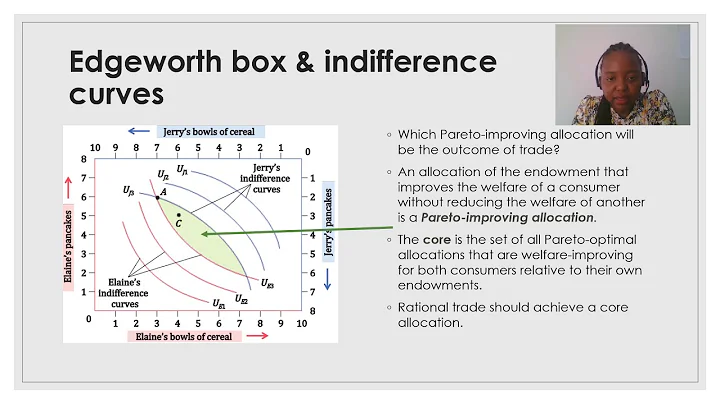Les méthodes d'enseignement des langues : une chronologie
Table of Contents
- Introduction
- Historical Timeline of Language Teaching Methods
- 2.1 Johan Comenius and the Inductive Approach
- 2.2 The Rise of Grammar Translation Approach
- 2.3 The Direct Method and Naturalistic Learning
- 2.4 Audiolingual Method and Behaviorism
- 2.5 Communicative Language Teaching and Cognitive Psychology
- 2.6 Total Physical Response (TPR)
- 2.7 Humanistic Language Teaching
- 2.8 Task-Based Language Teaching (TBLT)
- 2.9 Dogme and CLIL: Innovative Teaching Methods
- Conclusion
📚 Historical Timeline of Language Teaching Methods
Language teaching has evolved over the years, with various methods being proposed to enhance effectiveness and theoretical soundness. This article provides a historical timeline of the main language teaching methods, exploring their development, principles, and impact on language learning.
2.1 Johan Comenius and the Inductive Approach
Johan Comenius, a Czech scholar and teacher, introduced an inductive approach to language teaching in the 17th century. He emphasized the importance of associating language learning with the world around children. Comenius advocated for an approach that focused on teaching students to use the language through imitation, rather than relying solely on rules and analysis. His innovative methods included the use of pictures, reading, and speaking exercises.
2.2 The Rise of Grammar Translation Approach
By the 19th century, the systematic study of grammar took precedence in language teaching, particularly in European schools and universities. The Grammar Translation Approach, characterized by studying grammar and translating texts to understand literature, dominated this era. However, these methods were criticized for their lack of focus on oral communication and naturalistic language learning.
2.3 The Direct Method and Naturalistic Learning
In response to the limitations of grammar-oriented approaches, the Direct Method emerged in the late 19th century. This method emphasized teaching exclusively in the target language, with a primary focus on speaking and listening skills. It sought to create a more immersive and naturalistic learning environment by mimicking children's language acquisition process.
2.4 Audiolingual Method and Behaviorism
The 1950s witnessed the popularity of the Audiolingual Method, influenced by behaviorism and psychological theories. According to behaviorism, language learning involved forming new habits by using the language communicatively and eliminating old habits from the learners' first language. Audiolingualism employed drills and repetition to reinforce language patterns, with teachers providing stimulus, learners responding, and receiving feedback.
2.5 Communicative Language Teaching and Cognitive Psychology
The emergence of cognitive psychology in the 1970s revolutionized language teaching. Communicative Language Teaching (CLT) challenged grammar-oriented approaches and emphasized the goal of language teaching as communication. CLT focused on real-life communication in the target language, encouraging students to actively participate in class. This method integrated cognitive processes and conscious learning, optimizing language acquisition.
2.6 Total Physical Response (TPR)
Total Physical Response (TPR) was developed in the 1970s and utilized bodily movements to facilitate language learning. In TPR, the teacher gives commands in the target language, and students respond by imitating these movements. This method is predicated on the idea that physical actions help learners internalize language structures and vocabulary.
2.7 Humanistic Language Teaching
Humanistic Language Teaching emerged as an approach in the 1970s, emphasizing the holistic development of learners. It recognized the social and emotional aspects of language learning, promoting self-expression, and learner autonomy. Key methods associated with humanistic language teaching include the Silent Way, Suggestopedia, and Community Language Learning, each offering unique strategies to facilitate language acquisition.
2.8 Task-Based Language Teaching (TBLT)
Task-Based Language Teaching (TBLT) gained popularity due to its strong connection to second language acquisition theories. TBLT posits that language learning occurs through the completion of meaningful tasks. Students' performance and ability to fulfill the task are assessed, rather than solely focusing on language accuracy. This method promotes communicative competence and practical language use.
2.9 Dogme and CLIL: Innovative Teaching Methods
Recent innovative teaching methods include Dogme, which encourages teaching without textbooks and focuses on emergent language arising from conversation. Content and Language Integrated Learning (CLIL) is another popular method where both curriculum content and foreign languages are taught simultaneously. These methods provide alternative approaches to traditional language teaching, fostering engagement and authentic language use.
🎯 Conclusion
The evolution of language teaching methods reflects the continuous search for more effective and student-centered approaches that consider the complexities of language acquisition. From historical methods like grammar translation and audiolingualism to more contemporary approaches such as communicative language teaching and task-based learning, teachers have adapted methodologies to meet the diverse needs of language learners. By understanding the historical development of language teaching methods, educators can make informed decisions about their instructional practices, promoting effective language learning experiences.
Highlights
- The historical timeline of language teaching methods showcases the evolution of approaches to language instruction.
- The Direct Method emphasized immersion in the target language and focused on speaking and listening skills.
- Audiolingualism, influenced by behaviorism, emphasized habit formation and repetition.
- Communicative Language Teaching (CLT) revolutionized language instruction by emphasizing communication and real-life language use.
- Task-Based Language Teaching (TBLT) promotes language learning through meaningful tasks, fostering practical language use.
- Innovative methods like Dogme and CLIL provide alternative approaches to traditional language teaching, focusing on learner engagement and authenticity.
FAQs
Q: Which language teaching method emphasizes communication?
A: Communicative Language Teaching (CLT) places a strong emphasis on promoting communication and real-life language use.
Q: What is the goal of Task-Based Language Teaching (TBLT)?
A: Task-Based Language Teaching (TBLT) aims to enhance language learning by focusing on meaningful tasks and assessing students' ability to complete those tasks.
Q: How does the Direct Method differ from Grammar Translation Approach?
A: The Direct Method promotes immersion in the target language and focuses on speaking and listening skills, while the Grammar Translation Approach emphasizes studying grammar and translating texts.
Q: What are some innovative language teaching methods?
A: Dogme encourages teaching without textbooks and emphasizes conversation-based language emergence, while CLIL integrates the teaching of content and foreign languages. These methods provide alternative approaches to traditional language instruction.
Q: How has language teaching evolved over the years?
A: Language teaching has shifted from grammar-oriented approaches to methods that emphasize communication, collaboration, and real-life language use. The focus has moved from rote memorization to more engaging and practical language learning experiences.
 WHY YOU SHOULD CHOOSE Proseoai
WHY YOU SHOULD CHOOSE Proseoai








